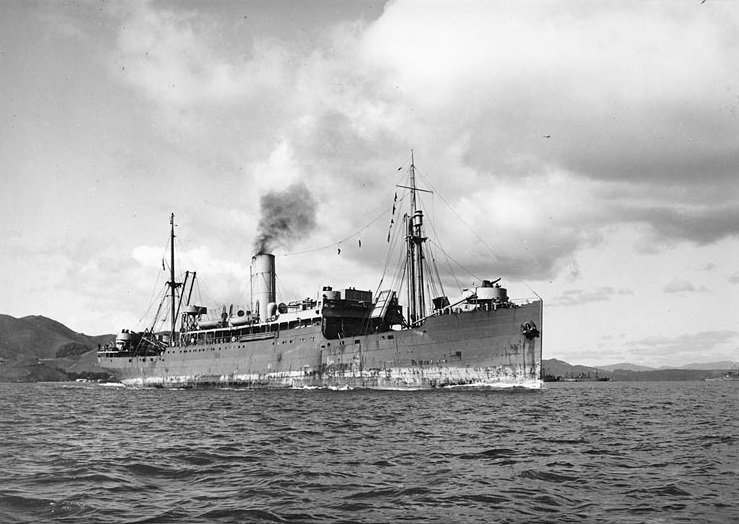S.S. Abangarez
The S.S. Abangarez, the third of thirteen banana carriers built between 1908 and 1911 for the United Fruit Company, was completed in Ireland in 1909. She entered service on the company's Costa Rica line, connecting New Orleans with ports in Panama and Costa Rica. On the outbreak of war in 1914, she was transferred from British to United States registry. After U. S. entry into the war, she was requisitioned by the Shipping Board and served as a troopship under Navy control (but not as a Navy ship) in 1918. She passed into Army service in January 1919, was released from requisition at the beginning of March, and sailed on her first postwar voyage for United Fruit in April.
S.S. Abangarez made the news on October 28th, 1923 when she collided with the U.S. Navy submarine O-5 as the submarine entered Limon Bay preparatory to transiting the Panama Canal. The merchant ship was little damaged, but the submarine sank in less than a minute with the loss of three men. A lengthy legal proceeding resulted in a finding that the S.S. Abangarez had not been at fault. She was cut down to a freighter when new safety regulations took effect in 1937, losing the middle deck of her superstructure.
Allocated to the Army by the War Shipping Administration in 1942, S.S. Abangarez served throughout World War II carrying cargo across the Atlantic. United Fruit transferred ownership of the old ship to the Maritime Commission in January 1946 as part payment for new ships but the War Shipping Administration used her for three voyages from San Francisco in 1946: to Korea in March, to Yokohama in June, and to Honolulu later in the year, returning to San Francisco in December. She was sold for scrap in April 1947.

Ancestors Traveled
John Wesley Wallis (Born: 1856) was on this ship in April of 1918 sailing from Cristobal Canal Zone to New Orleans, Louisiana.